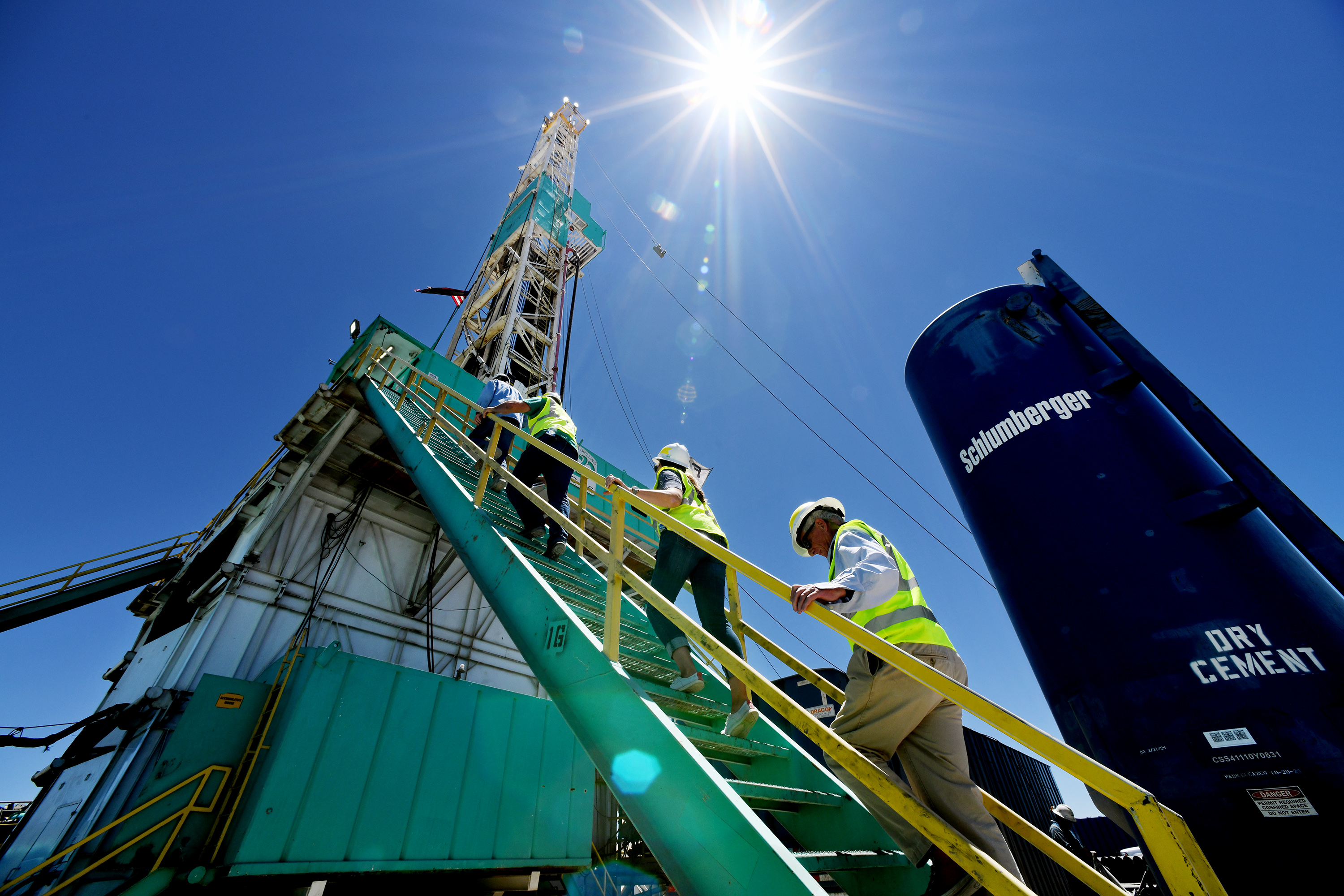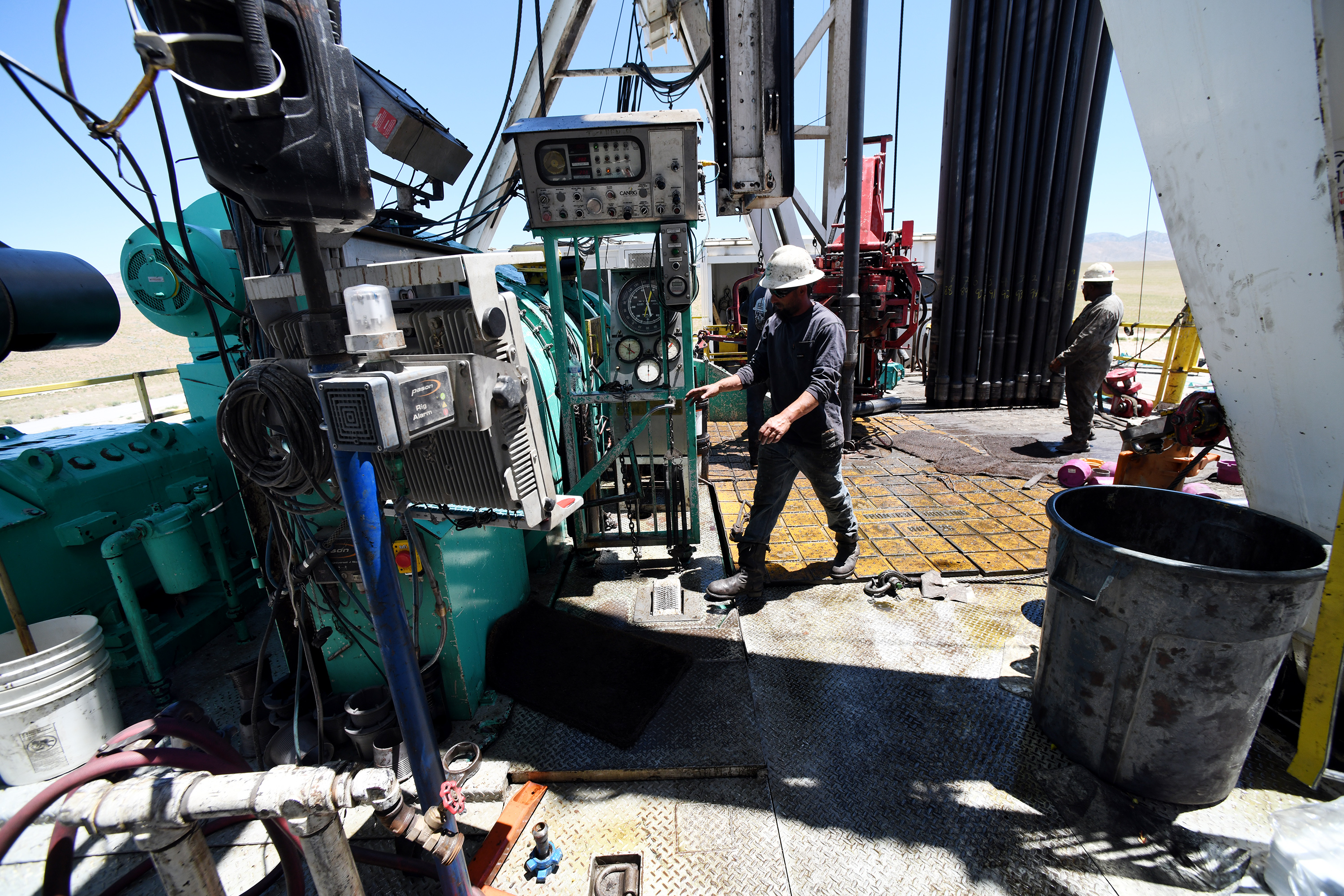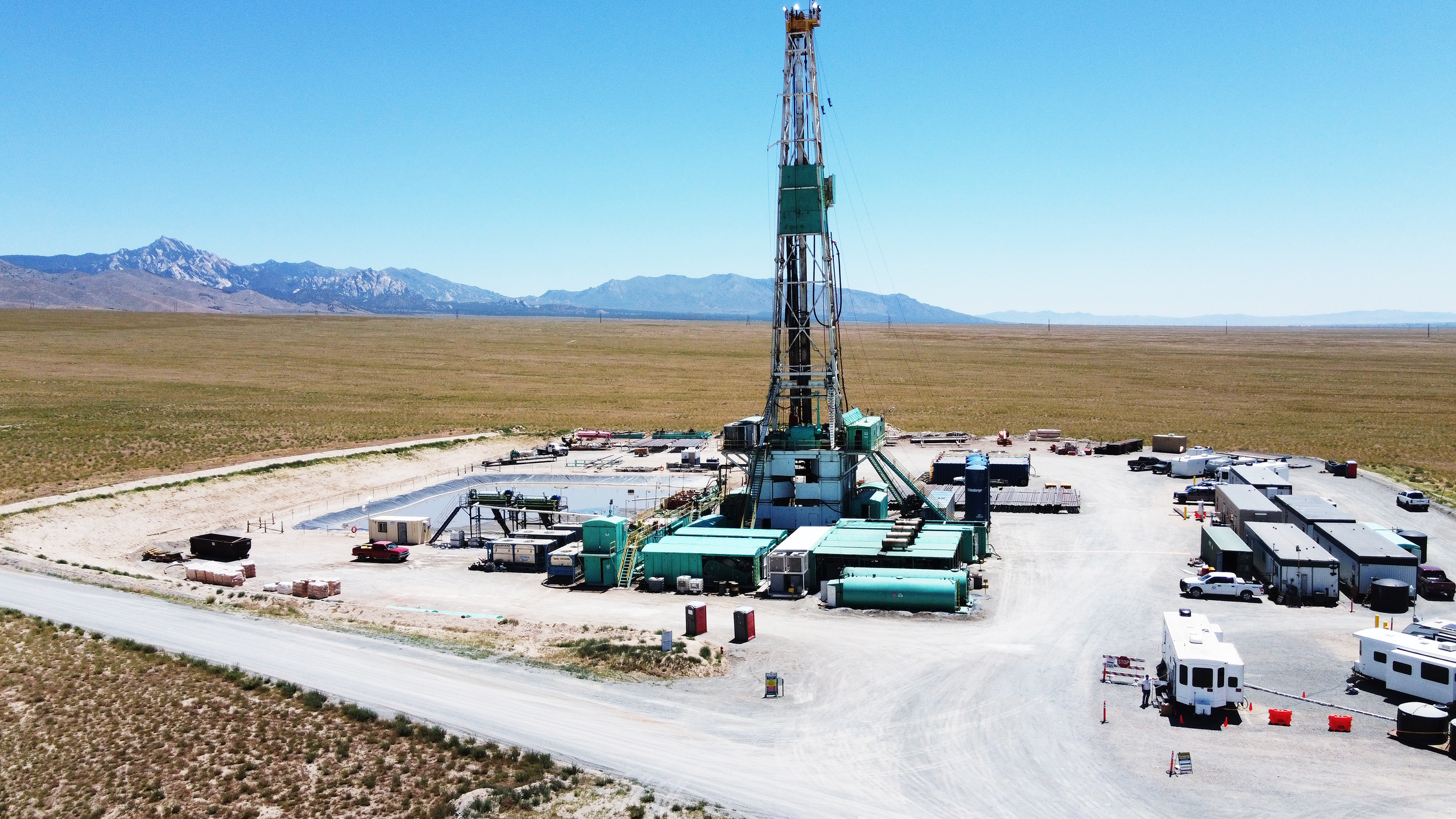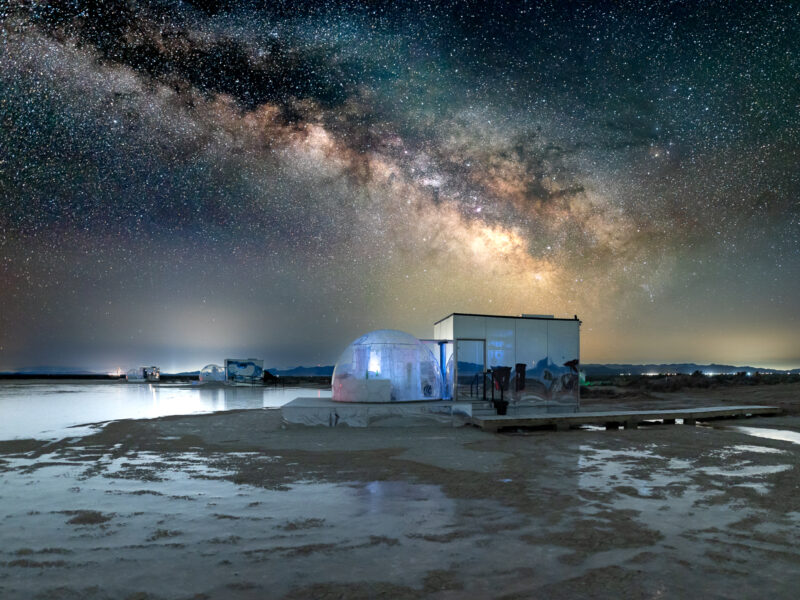
Fervo forges ahead with the world’s largest “next-generation” geothermal project in Beaver County
This story appears in the April issue of Utah Business. Subscribe here.
For several years, Utah FORGE, a Department of Energy-sponsored project investigating geothermal capabilities, has ensured Beaver County found itself at the forefront of a radical transformation in the energy industry.
Technological advancements have made geothermal energy a crucial player in the shift toward renewable energy, with experts regularly pointing to its massive unlocked potential with no greenhouse gas emissions. In Beaver, FORGE created a set of tests to explore the area’s geothermal viability, laying the groundwork for companies to easily move into the county and develop their projects.
Ready, set, geothermal
Texas-based geothermal developer Fervo Energy noticed FORGE’s work and took advantage of the opportunity to build what will become the world’s largest “enhanced” geothermal site with the aim of producing 400 megawatts of 24/7 carbon-free electricity.
“When we were looking at where our first true greenfield development would be, we were looking for really high-quality geothermal resources and overlaid on access to transmission,” says Fervo’s VP of strategy, Sarah Jewett, referring to the need to find a high-producing location that could be easily connected to the existing energy grid. “More than anything, the riskiest part of these projects is drilling the first wells.”
Jewett points out that the issues can involve unknowns around the site’s geological characteristics and how deep they need to drill. However, Utah FORGE’s public data effectively acted as their testing phase, allowing them to move forward in Beaver County with more insight.
Construction began last fall on Fervo’s subsurface work, and Jewett says surface construction will start late this year or early next, with power coming online at different levels in 2026, 2027 and 2028.
According to Milford Mayor Nolan Davis, the construction phase will bring thousands of jobs to the region, providing benefits and challenges.
“We’re looking forward to Fervo Energy building this power plant. … It’s going to take four to five years to get up to full capacity, but it’ll employ several hundred people when it’s done — that’s a real boost to our economy,” Davis says, adding that there are a lot of questions and uncertainty facing the town still. “I think it’s the unknown of what the byproduct’s going to be. Are we going to develop other industries? Are other industries going to come in because of this power plant?”

Converting the potential
In recent years, the potential of geothermal energy has caught the attention of regulators and scientists, given its potential to provide large quantities of energy without being beholden to weather — all as a renewable energy source.
“The thermal energy beneath our feet is enormous,” Utah geoscience professor Joseph Moore told the House of Representatives in 2019 while summarizing Utah FORGE’s status. “Some of this energy reaches the surface naturally through hot springs like those found in Virginia, Arkansas and Wyoming. But this is only a tiny fraction of the available energy. If we could capture even two percent of the thermal energy at depths between about two and six miles, we would have more than 2000 times the yearly amount of energy used in the U.S.”
Utilizing geothermal energy is not a new concept; the world’s largest geothermal powerplant opened in California in 1960. But “enhanced” geothermal projects are what unlocked real potential to address the massive energy increases the planet is facing. These projects use fluid injections to access higher temperatures in the wells, which can be converted into energy.
“The market is really driving demand,” Jewett says, explaining that states like California are maxing out on their energy resources but need to make sure their future investments are carbon-free. “Geothermal has never really been part of that conversation. … Now, I think the reliability piece is coming into play. Regulatory agencies like the Public Utilities Commission of California are saying, ‘Oh my gosh! We have to replace fossil fuels and retire nuclear assets with firm, clean energy. Clean energy that is not weather-dependent that generates around the clock.’ There is all this focus on geothermal being able to play that base load energy resource but in a clean, zero-emission way.”
The market potential for geothermal has largely been supported by the Department of Energy in recent years. A 2022 publication by the agency argued that growth of the industry would be “a critical step to meeting the nation’s goals of a carbon-free electric grid by 2035.” In the case of FORGE, the department has invested tens of millions of dollars into funding research and development.
For Jewett, this goes hand in hand with a larger transition and the limitations that other renewable energy sources present.
“We are very fortunate that the energy transition has happened in such a way that certain key markets, like California, are really feeling the burden in trying to transition their grids more fully to clean energy,” she says. “They have pretty high penetration of renewables, but it’s mostly weather-dependent renewables like wind and solar. They’re trying to decarbonize the times when they’re really reliant on fossil fuels, such as the nighttime and winter. Those weather-dependent resources aren’t great at producing during those times, so they really need firm-generating assets that are also carbon-free.”

“The number one thing we need to build these projects efficiently and effectively is a healthy and robust oil and gas supply chain.”
Growing with “next-generation” geothermal
For Davis and city council member Lee Whitney, Milford’s biggest concern is working closely with Fervo to ensure sustainable growth. They point out that the town doesn’t make regulatory decisions but will be hosting the labor population. On top of that, Davis says, there’s a potential for Fervo to provide resources that other renewable energy companies operating in Beaver County have failed to negotiate with them.
“One of the issues we do have, and one of our concerns we’ve always had with these companies that come in, is that everything that’s generated power-wise goes to California,” Davis says. “We see absolutely nothing. I mean, I realize we get the taxes and everything, but it would be nice if we could enter into an agreement where we could utilize some of that power locally to reduce our power costs. So at Fervo, they’re actually trying to do that right now.”
For Jewett, one major upside of building a project of this scale in Utah is its proximity to the oil and gas industry. She points out that the supply chain is nearly identical, and there’s crossover in the workforce, making it easier to source materials and workers.
“The number one thing we need to build these projects efficiently and effectively is a healthy and robust oil and gas supply chain,” she says. “We are using all the same equipment as the oil and gas industry: modern drilling rig, modern oil and gas surface crews, and many of the same materials that go into the system.”
As for workers, she notes they will have to work closely with the town to make sure the transition is handled well.
“When you bring a bunch of temporary construction workforce laborers into a town as small as Milford and to a region as rural as Beaver, you try, hypothetically and ideally, to do it in a way that doesn’t disrupt or impact the local community in any sort of deleterious way,” Jewett says. ![]()





